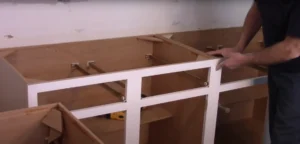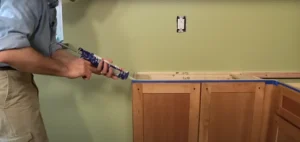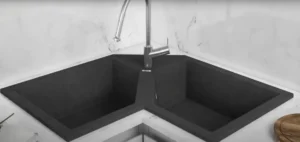Renovating your kitchen or bathroom can be an exciting project. Yet, many homeowners find themselves overwhelmed by the costs involved. It’s tricky to know where to start, and seeing estimates that vary widely only adds to the confusion.
Did you know that a typical kitchen renovation often costs more than most people initially budget? A common guideline suggests spending 10-15% of your home’s value on a kitchen upgrade, though unexpected expenses can push it higher.
In this article, we’ll break down how much for a kitchen and bathroom renovation you should expect to spend. We’ll cover average costs, key factors affecting these prices, and tips on saving money without cutting corners.
Keep reading!
Key Takeaways
- Kitchen remodel costs depend on the size of the kitchen, ranging from $10,000 to over $77,939 for larger spaces. Factors like materials and location also affect prices.
- Major bathroom renovations like installing a walk-in shower can cost between $8,500 and $20,000. Guest baths typically range from $2,500 to $10,000.
- Cabinets often take up around 29% of a kitchen remodel budget while energy-efficient appliances add long-term savings despite higher initial costs.
- Flooring upgrades for minor remodels usually cost between $10,000 and $20,000 whereas luxury options can go beyond $70,000.
- Hiring professionals offers higher quality work but at greater expense. DIY projects save money upfront but may lack professional finish and take longer to complete.
Overview of Kitchen Remodel Costs
Kitchen remodel costs can vary widely based on several factors. The size of your kitchen, choice of materials, and labor fees all play a significant role in the final price.
Average Costs by Size (Small, Medium, Large)
Homeowners looking to remodel their kitchens need to understand the cost implications based on the size of their space. Let’s break it down.
| Kitchen Size | Renovation Type | Cost Range |
| Small (less than 70 sq. ft.) | Minor | $10,000 – $20,000 |
| Medium (70-150 sq. ft.) | Major | $22,000 – $46,000 |
| Large (150+ sq. ft.) | Major | $77,939 on average |
Costs vary widely by size and scope. A small kitchen upgrade is less expensive, while a large kitchen remodel can be more costly. Key factors include materials, labor, and location.
Factors That Affect Costs (Materials, Labor, Location)
Costs for kitchen and bathroom renovations can vary widely. Different factors such as materials, labor, and location play a significant role in determining the final amount.
- Materials
- Cabinetry: Custom cabinets can cost between $12,000 and $30,000. Stock cabinets are cheaper.
- Flooring: Options range from laminate flooring at $3 to $8 per square foot to ceramic tiles at $7 to $15 per square foot.
- Appliances: High-end appliances may set you back by $8,000 to $15,000 or more. Standard models could cost around $3,000 to $5,000.
- Labor
- General Contractors: They charge between $50 and $150 per hour.
- Plumbers and Electricians: Rates fluctuate but average around $75 to $125 per hour for plumbers and electricians.
- Permit Fees: Expect costs from $450 up to $2,500 based on your area.
- Location
- Urban vs Rural Areas: Costs are generally higher in urban settings due to demand and local market rates.
- Regional Differences: Coastal cities like New York or San Francisco often have renovation expenses 20-30% above the national average.
- Weather Conditions: Humid regions might require moisture-resistant materials that could elevate costs.
Selecting materials wisely and considering DIY options might help in managing these expenses efficiently.
Breakdown of Kitchen Remodel Costs
Cabinets often take up a large portion of the budget. Upgrading to energy-efficient appliances can also impact costs significantly.
Cabinets
Cabinets can take up to 29% of the overall cost in a kitchen remodel. The average expense for cabinets is about $8,200. These are essential because they provide storage while setting the tone for your kitchen’s style.
Materials range from affordable options like MDF to expensive hardwoods.
Energy-efficient features and smart designs increase both functionality and value. For instance, soft-close hinges reduce wear over time, saving money on future repairs. Adding LED lights inside or under cabinets enhances visibility and reduces energy bills.
High-quality cabinets boost your kitchen’s look and its ROI (return on investment).
Appliances
Appliances play a vital role in any kitchen remodel. New kitchen appliances, like dishwashers and refrigerators, can enhance the functionality of your space. The cost for these modern tools usually runs around $4,500.
This expense covers essential items such as stoves, ovens, and microwaves that make cooking more efficient.
Energy-efficient options might have higher upfront costs but offer savings on energy bills over time. These choices include low-energy dishwashers and GFCI-protected outlets for safety.
Today’s smart appliances often come with features that allow you to control them via smartphone apps or voice commands, adding convenience to your daily routine.
In bathrooms too, upgrading your fixtures can add value to the home while optimizing water usage. Low-flow showerheads and efficient toilets help reduce water waste without compromising performance.
For example, swapping out an old sink installation with a sleek vessel sink gives the bathroom a fresh look while being functionally effective.
Newer models also focus on saving resources by incorporating advanced technologies such as sensors and timers which contribute significantly to reducing overall utility expenses over time.
Investing in quality appliances improves aesthetics and enhances day-to-day living experiences through innovative designs aimed at energy conservation and ease of use.
Flooring
Flooring dramatically impacts the look and feel of your kitchen or bathroom. Upgrading flooring in a minor remodel may cost between $10,000 and $20,000. Luxury remodels can range from $70,000 to $130,000 if you choose high-end materials like marble or hardwood.
Cork flooring has become popular due to its sustainability and comfort underfoot.
Different materials come with varied price points and durability levels. Tile is a common choice for wet rooms because of its water resistance. It’s also quite versatile in design options.
For those aiming at energy savings, consider radiant floor heating beneath tile or stone floors.
Labor costs also add up quickly depending on the complexity of installation methods required by different materials. Geographic location affects these prices too; urban areas often see higher labor rates than rural ones.
Always consult with professionals to get precise estimates based on your specific needs and area conditions.
Lighting and Electrical
Lighting and electrical work in a kitchen remodel can cost between $1,400 and $3,000. The expenses vary based on the size of the kitchen and the difficulty of installation. Upgrading to energy-efficient lighting improves visibility and reduces long-term electricity bills.
Hiring a professional electrician ensures safety and compliance with local codes. Smart lighting systems allow homeowners to control lights remotely, adding convenience and sophistication.
Always prioritize proper wiring for kitchen appliances to prevent electrical issues down the line.
Backsplash
A backsplash can transform your kitchen or bathroom with a splash of color and design. Basic tile options start at $300, but custom designs can climb as high as $4,000. Subway tiles are popular for those wanting a classic look without breaking the bank.
Materials like glass, stone, or stainless steel often cost more but add unique beauty and durability. Consider your kitchen counters when choosing materials to create a harmonious look.
Investing in energy-efficient fixtures while renovating may also help reduce long-term costs.
Overview of Bathroom Remodel Costs
Bathroom remodel costs can vary widely based on several key factors. The type of bathroom, design choices, and any necessary floor plan changes will significantly impact the budget.
Average Costs by Type (Half Bath, Guest, Primary)
Remodeling a bathroom can vary widely in cost based on its type and size. Below is a detailed overview of average costs by bathroom type: half bath, guest bath, and primary bath.
| Bathroom Type | Average Cost |
| Half Bath (Powder Room) | $120 – $275 per square foot |
| Guest Bath | $2,500 – $10,000 |
| Primary Bath | $10,000 – $30,000 |
Half baths typically cost the least to renovate due to their smaller size and limited fixtures. Guest baths fall in the middle range, offering a balance between cost and functionality. Primary baths often involve higher expenses due to their larger size and more luxurious amenities.
Cost Factors (Design, Floor Plan Changes, Electrical)
Design, floor plan changes, and electrical work significantly impact the renovation costs for kitchens and bathrooms. Each factor involves different elements that contribute to the final expense.
- Design Fees
- Engaging a professional designer can add 10% to 20% to your total renovation cost.
- Custom designs increase costs due to unique materials and unique fixtures.
- Renovating magazine subscriptions helps homeowners stay updated with trends without hiring a designer.
- Floor Plan Changes
- Altering the layout often requires moving plumbing, which needs a licensed plumber at $50 to $150 per hour.
- Changing the configuration of appliances or cabinets could increase labor expenses, as well as the time it takes to get the project done.
- Expanding the space may involve tearing down walls, adding structural supports, and redoing floors.
- Electrical Work
- Upgrading electrical systems ensures safety but ranges from $100 to $200 per fixture or outlet.
- Installing energy-efficient lighting can lead to savings on utility bills over time.
- Adjustments for new appliances might require rewiring parts of the kitchen or bathroom.
Each of these factors adds complexity and costs but also contributes to a more functional and aesthetically pleasing space.
Breakdown of Bathroom Remodel Costs
Remodeling a bathroom involves several cost components. Understanding these can help you budget effectively and make informed decisions about materials and labor.
Shower and Tub
Installing a new shower comes with varied costs. A walk-in shower might set you back between $8,500 and over $20,000. Standard showers often range from $2,000 to $9,000 for installation.
Homeowners need to consider both labor and material expenses when planning these upgrades.
Bathtub installations are generally less expensive than showers. Costs usually fall between $800 and $4,600 depending on the type and style of the tub selected. Remodeling magazine suggests considering energy-efficient models which can save money in the long run by reducing water usage.
Tile and Flooring
Tile and flooring options significantly impact the cost of bathroom renovations. Ceramic, vinyl, porcelain, and linoleum are popular choices, each offering different benefits and price points.
For example, ceramic tiles cost around $12 per square foot on average and provide a durable surface that’s easy to clean. Vinyl is another budget-friendly option that mimics the look of wood or stone but costs less.
Walk-in shower installations can drive up renovation expenses with prices ranging from $3,500 to $15,000. The tile choice for these showers influences both aesthetics and budget. Porcelain tiles resist water and stains well but come at a higher cost compared to other materials.
Homeowners must balance their desire for quality finishes with affordability when choosing tile and flooring options.
Concepts
– Popular Choices: Ceramic Tiles
– Durable Surface
– Budget-Friendly Options: Vinyl
Tools
– Tile Installation Cost Calculator
Sinks and Faucets
Sinks and faucets are essential elements in both kitchen and bathroom renovations. Vanities can range from $100 to $2,800 depending on the style and materials used. Labor costs for installing sinks and faucets vary greatly, starting at around $450 but potentially reaching up to $16,000 if extensive plumbing work is required.
The choice of materials plays a significant role in the final cost; stainless steel sinks tend to be more affordable than marble or granite options.
Faucets come with a wide price range as well, influenced by design and functionality. Basic models might set you back under $50, whereas high-end fixtures with advanced features can go beyond several hundred dollars.
Energy-efficient faucet designs save on water bills and contribute positively to environmental sustainability. These upgrades bring practical benefits while adding aesthetic value to your home renovation project.
Toilet and Ventilation
Installing a new toilet costs an average of $375. Selecting the right toilet can impact both budget and water efficiency. Many homeowners choose energy-efficient models to save on utility bills long-term.
Proper bathroom ventilation is critical. Installing a vent fan with light averages around $400, but it helps avoid water damage and ensures fresh air circulation. Good ventilation prevents mold growth and prolongs the life of bathroom materials like tile and flooring.
Cabinets and Countertops
Cabinets in bathroom remodels often cost between $270 and $400. The price depends on the wood type, design, and size. Installation adds another expense ranging from $1,200 to a whopping $13,000.
Custom designs typically push this upper limit due to personalized craftsmanship.
Countertops can range between $200 to $1,000 depending on material choice like granite or quartz. Affordable laminate options exist but may lack durability compared to pricier counterparts.
Choices impact both the aesthetics and functionality of your renovated space.
Saving Money on Kitchen and Bathroom Renovations
Choose energy-efficient appliances to save money in the long run. Consider doing small tasks yourself, like painting or replacing faucets, to reduce labor costs.
Choosing Materials and Appliances
Choosing the right materials and appliances can significantly impact the overall cost and quality of your kitchen and bathroom renovations. Homeowners should focus on balancing functionality, durability, and aesthetics.
- Cabinets
- Select cabinets that offer ample storage space. Prefabricated options from stores like IKEA often come at a lower price but custom-made cabinets provide more flexibility in design.
- Countertops
- Granite and quartz countertops are popular for their durability and resistance to wear. Laminate countertops offer a budget-friendly alternative while still providing an appealing look.
- Appliances
- Energy-efficient appliances can save money in the long run. Look for ENERGY STAR-rated refrigerators, dishwashers, and stoves to reduce energy consumption without sacrificing performance.
- Flooring
- Flooring materials like ceramic tiles or vinyl planks are both durable and easy to clean. Hardwood floors add warmth but may require more maintenance over time.
- Lighting and Electrical
- Incorporate LED lighting for energy efficiency. Pendant lights work well over islands or breakfast bars, adding a stylish touch while ensuring adequate illumination.
- Backsplash
- Glass or porcelain tile backsplashes add a modern look and protect walls from moisture damage. Consider peel-and-stick options if you’re looking for an easy DIY project.
- Sinks and Faucets
- Stainless steel sinks are durable and easy to maintain, while farmhouse-style sinks bring a rustic charm to kitchens or bathrooms. Choose faucets that complement the style of the sink; matte black finishes are trendy nowadays.
- Shower Doors
- Frameless shower doors create a sleek, modern appearance in bathrooms but may be pricier than framed options which are equally functional yet more affordable.
- Toilet and Ventilation
- Modern toilets with water-saving features can lower utility bills over time. Quality ventilation ensures comfort by reducing humidity levels in bathrooms, preventing mold growth.
- Cabinets in Bathrooms
- Opt for moisture-resistant materials like PVC or solid wood with protective coatings for bathroom cabinets to prevent warping due to humidity levels.
DIY vs. Professional Remodeling Decisions
Deciding between DIY and professional remodeling for your kitchen and bathroom can significantly impact your renovation costs. Below is a comparison to help you make an informed decision.
| Factor | DIY | Professional Remodeling |
| Cost | – Generally lower upfront costs- Potential for budget overruns- No labor charges | – Higher initial costs- Fixed estimates- Includes labor fees |
| Quality | – Dependent on your skill level- Possible need for rework- May lack professional finish | – High-quality standards- Professional finish- Often includes warranties |
| Time | – Potential for longer project timelines- Work on your schedule- Learning curve can add time | – Faster completion- Scheduled work timeline- Efficient workflow |
| Stress | – High stress due to extra responsibilities- Managing materials and tools- Ensuring adherence to code | – Less stress- Managed by professionals- Expert handling of materials and permits |
| Customization | – Full control over design- May lack advanced skills for complex designs- Limited by own creativity and resources | – Access to expert designers- Custom solutions- Advanced customization options |
| Permits and Regulations | – Have to manage permits yourself- Must ensure compliance with local codes- Potential delays due to paperwork | – Professionals handle permits- Ensures compliance- Smoother process |
Professional companies often have cost-saving relationships with manufacturers. This can reduce material costs compared to buying retail for a DIY project. More than one-third of homeowners exceed their renovation budgets, so weighing these factors carefully can lead to better financial decisions.
Conclusion
A kitchen or bathroom renovation can transform your home and increase its value. Costs vary based on size, materials, labor, and location. Whether you’re updating a small powder room or a large primary bathroom, understanding the factors that influence pricing is key.
Planning wisely ensures that you make the most of your budget while achieving your renovation dreams.
FAQs
1. How much does a kitchen renovation cost?
The cost of a kitchen renovation depends on factors like kitchen countertops, cabinets, faucets and plumbing. On average, it ranges from $12,000 to $35,000.
2. What is the price range for bathroom remodeling?
Bathroom remodeling costs vary based on elements such as full bathrooms or powder rooms. Prices typically range from $6,000 to $15,000.
3. Do energy-efficiency upgrades affect renovation costs?
Yes! Adding energy-efficient features like insulation or HVAC systems can increase upfront costs but save money in the long run.
4. Are there additional costs for renovating basements or crawl spaces?
Renovating basements or crawl spaces may involve extra expenses for sump pumps and hot water systems. These additions ensure proper functionality and safety.
5. Can I use affiliate links to find deals on materials?
Yes! Affiliate links can help you find discounts on items like faucets and plumbing fixtures at retail shops online.





